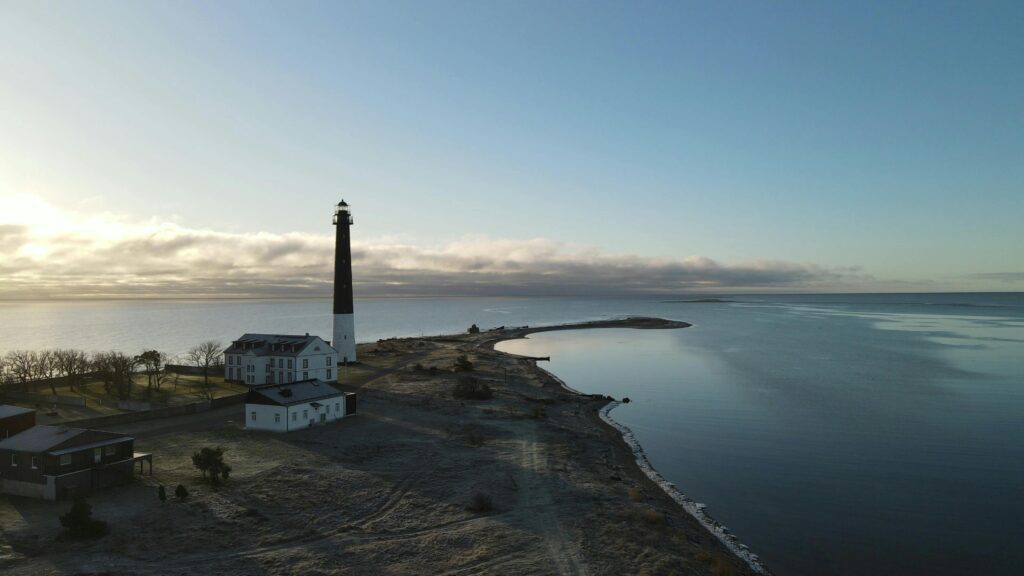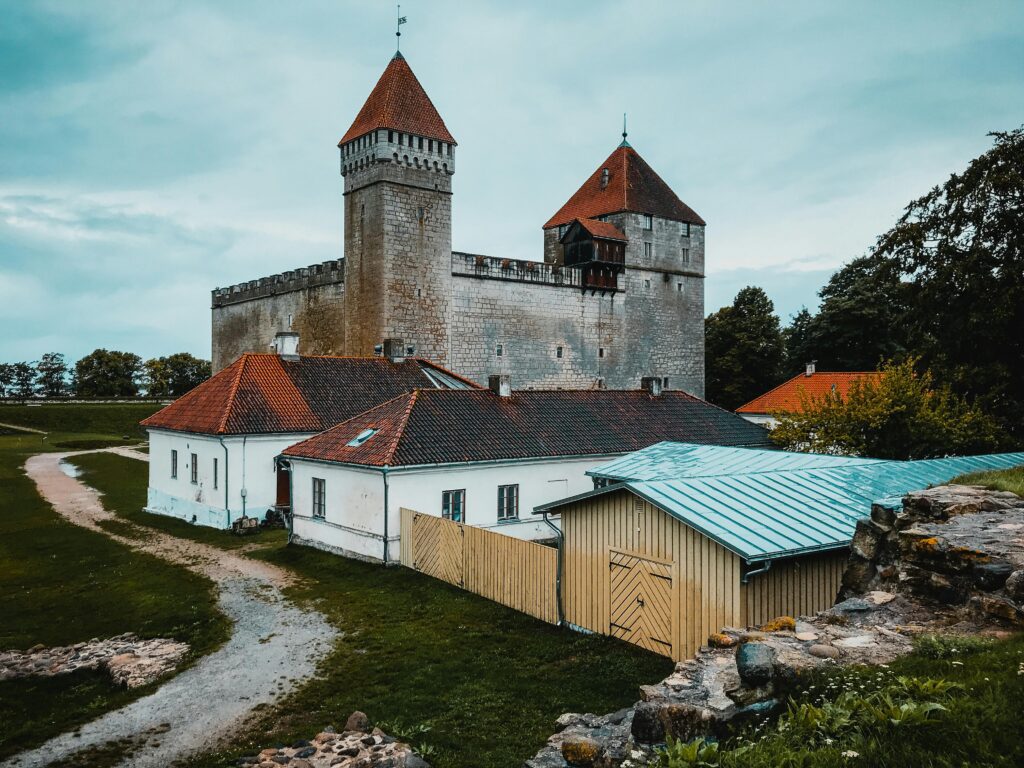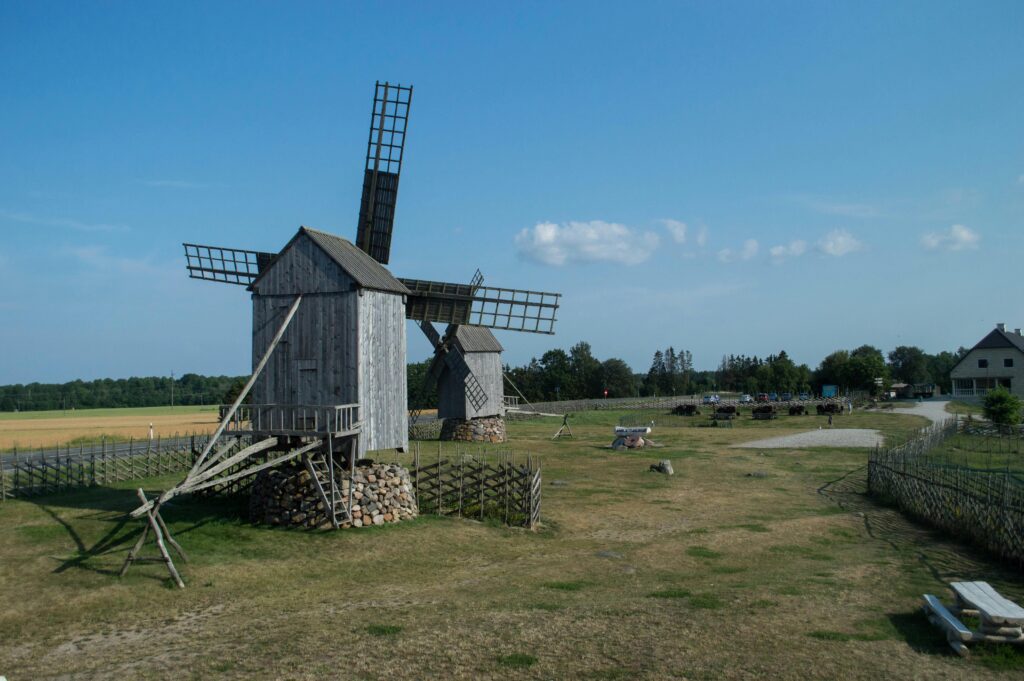Introduction
Saaremaa, Estonia’s largest island, is a dream destination for travelers seeking unspoiled nature, medieval charm, and a slower pace of life. Known for its rugged coastlines, juniper-covered landscapes, and historic Kuressaare Castle, Saaremaa offers a perfect blend of adventure and relaxation.
As someone who wandered its winding paths and tasted its famous rye bread, I can attest that Saaremaa is more than just a stopover—it’s a place where time slows down, and every corner tells a story. The island’s air carries the scent of juniper and sea salt, a sensory reminder of its wild beauty. I still remember the first time I stepped onto the cobblestones of Kuressaare, the island’s capital, where the 14th-century castle stands as a silent guardian of history.

Why Visit Saaremaa?
– Untouched Nature: From the Kaali Meteorite Crater to the Panga Cliffs, the island is a geological wonder. The forests hum with birdsong, and the coastline is dotted with hidden coves.
– Rich History: Explore medieval castles, windmills, and traditional villages where time seems frozen. The island’s Viking heritage is palpable in its folklore and festivals.
– Unique Culture: The islanders preserve ancient traditions, from folk dances to handicrafts. Don’t be surprised if you’re invited to share a homemade meal or join a spontaneous song session.
When to Visit Saaremaa for the Best Experience
Best Seasons to Visit
- Summer (June-August): Warm weather (18-25°C), long daylight hours (the famous “white nights” where the sun barely sets), and vibrant festivals like the Saaremaa Opera Days. Beaches like Mändjala come alive with picnickers and swimmers.
- Spring (May) & Autumn (September): Fewer crowds, mild temperatures, and golden landscapes—ideal for hiking. Spring brings blooming orchards, while autumn paints the juniper forests in fiery hues.
- Winter (December-February): Snow-covered fairy-tale scenery, perfect for cozy retreats and sauna culture. The Kuressaare Christmas Market is a must-visit, with mulled wine and hand-knit woolens.
Events & Festivals
- Kuressaare Maritime Days (July): A lively celebration of sea traditions, featuring boat races, fish markets, and folk music. The harbor fills with wooden ships, and the smell of smoked fish lingers in the air.
- Saaremaa Viking Festival (August): Step back in time with reenactments, archery, and crafts. I once watched blacksmiths forge ancient tools while children played Viking games nearby.
- Saaremaa Opera Days (July): Open-air performances in Kuressaare Castle’s courtyard—a magical experience under the stars.
Pro Tip: Book accommodations early in summer—Saaremaa’s charm attracts both locals and international travelers! For a quieter experience, visit in May or September.
Off the Beaten Path Locations
1. Vilsandi National Park
A paradise for birdwatchers, this park is home to over 250 bird species, including rare eagles and cormorants. Walk along secluded beaches like Harilaid, where the only sounds are crashing waves and crying gulls. Spot seals basking on the rocks—locals say they’re the island’s silent guardians.
How to Get There: Rent a bike in Kuressaare (€15/day) or drive to Kihelkonna and hike the coastal trails.
2. Angla Windmill Hill
Five historic windmills stand as a testament to Saaremaa’s agricultural past. Climb inside one for panoramic views of the countryside, where patchwork fields stretch to the horizon. The onsite museum showcases traditional farming tools, and the café serves fresh kama (roasted grain porridge).
Hidden Detail: Look for the “lucky windmill wheel”—locals believe touching it brings good fortune.
3. Sõrve Peninsula
A hauntingly beautiful area with WWII bunkers and lighthouses. The Sõrve Lighthouse offers 360-degree views of the Baltic Sea. The crisp sea breeze and endless horizon make it a photographer’s dream.
Personal Anecdote: I met an elderly fisherman here who shared stories of Soviet-era resistance. His weathered hands pointed to hidden bunkers, now overgrown with moss.

Hidden Gem Alert: Visit Mändjala Beach at sunset—its golden sands and quiet shores feel like a secret escape. Pack a picnic of local cheese and black bread.
Local Experiences You Can’t Miss
1. Traditional Sauna Rituals
Saaremaa’s smoke saunas are legendary. Try “leil” (sauna steam) followed by a dip in the Baltic Sea—locals swear by its rejuvenating effects. For the brave, try the “viht” (birch branch whisk) to stimulate circulation.
Best Spot: Pädaste Manor’s seaside sauna, where you can plunge into the icy water between steam sessions.
2. Juniper Craft Workshops
Juniper is Saaremaa’s signature scent. Join a workshop at Juniperium Studio to carve your own wooden spoon or buy handcrafted souvenirs like berry-picking baskets. The wood’s spicy aroma lingers on your hands for hours.
3. Folk Music & Dance
Attend a “leigarid” (local dance) evening in Kuressaare—the rhythmic steps and accordion tunes are infectious! The Kuressaare Town Hall often hosts free performances.
Personal Anecdote: I stumbled upon a village celebration where elders taught me an old Estonian folk dance. The warmth of the community made it unforgettable—especially when they handed me a shot of “hõbe” (local schnapps) afterward!
Unique Accommodations in Saaremaa
| Type | Recommendation | Price Range (per night) | Why Stay Here? |
|---|---|---|---|
| Historic Manor | Pädaste Manor (luxury spa retreat) | €200-€400 | Sleep in a 16th-century manor with a Michelin-starred restaurant. The infinity pool overlooks the sea. |
| Cozy Farmstay | Saaremaa Talu (authentic rural stay) | €50-€100 | Feed lambs, collect eggs, and dine on farm-fresh meals. The hosts teach traditional bread-baking. |
| Quirky Glamping | Mõisaküla Talu (seaside yurts) | €80-€150 | Fall asleep to the sound of waves in a solar-powered yurt. Includes a private wood-fired sauna. |
Pro Tip: Book Pädaste Manor’s “Sauna & Stars” package for a midnight sauna under the Northern Lights (winter only).
Authentic Food Spots
Must-Try Dishes
- Saaremaa Rye Bread: Dense, dark, and slightly sweet—best enjoyed with local butter and honey. Baked in wood-fired ovens for 12+ hours.
- Smoked Fish: Herring and flounder, smoked using juniper wood. Try it at Veski Trahter with a dollop of sour cream.
- Kama: A traditional Estonian dessert made from roasted grains, mixed with yogurt or kefir.
Top Restaurants
- Ööbiku Gastronomy Farm: Farm-to-table dining with a modern twist. Their “deer tartare with juniper berries” is a revelation.
- Veski Trahter: A historic windmill-turned-restaurant serving hearty “mulgipuder” (barley and potato stew).
- Gotsu Grill: A food truck near Kaali Crater offering “sült” (jellied pork)—a local delicacy.
Personal Anecdote: At a roadside café, I tried “kali” (Estonian fermented soda)—its tangy fizz was surprisingly refreshing! The owner laughed as I puckered at my first sip.

Meeting Locals & Cultural Etiquette
Estonians are reserved but warm once you break the ice. A few tips:
– Learn a few Estonian phrases: “Tere” (Hello) and “Aitäh” (Thank you) go a long way.
– Respect silence: Locals value quiet—avoid loud conversations in public spaces like saunas or buses.
– Join a “käärid” (scissors game): A traditional drinking game where you mimic scissors with your fingers. Losers take a shot!
Cultural Insight: Saaremaa’s “kiiking” (Estonian swing sport) is a must-see—locals swing on giant poles, flipping 360 degrees!
Photography Opportunities
Best Spots for Stunning Shots
- Kuressaare Castle at Golden Hour: The moat reflects the pink sky.
- Panga Cliffs’ Dramatic Sunset: Shoot from the lower ledge for wave-smashing drama.
- Abandoned Soviet Military Ruins: Overgrown with moss, these eerie structures tell a Cold War story.
Pro Tip: Use a polarizing filter to capture the Baltic’s deep blue hues. Visit Tagamõisa Peninsula at dawn for misty, ethereal shots.
Practical Tips for Exploring Saaremaa
Transportation
- Rent a car (€30-€50/day) for flexibility. Roads are well-maintained but narrow.
- Buses run between major towns but are infrequent (check Tpilet.ee for schedules).
- Bike rentals (€15/day) are ideal for short distances.
Budgeting
- Mid-range traveler: €50-€80/day (meals, transport, activities).
- Backpacker: €30-€50/day (hostels, self-catering).
Packing List
- Waterproof jacket (weather changes fast!)
- Sturdy hiking shoes for rocky cliffs
- Reusable water bottle (tap water is safe)
Need more tips? [Removed resource link].
3-Day Saaremaa Itinerary
Day 1: History & Nature
- Morning: Explore Kuressaare Castle and its museum. Climb the tower for island views.
- Afternoon: Hike around Kaali Meteorite Crater. Visit the onsite museum (€5) to learn about its cosmic impact.
- Evening: Sunset at Mändjala Beach, followed by dinner at Gotsu Grill.
Day 2: Coastal Adventures
- Morning: Birdwatching in Vilsandi National Park. Pack binoculars!
- Afternoon: Visit Angla Windmill Hill and join a bread-baking workshop.
- Evening: Dinner at Ööbiku Gastronomy Farm (reserve ahead).
Day 3: Culture & Relaxation
- Morning: Juniper craft workshop at Juniperium Studio.
- Afternoon: Sauna & swim at Pädaste Manor. Book a massage (€60).
- Evening: Folk music in Kuressaare Town Square. Try “hõbe” schnapps at a pub.
Frequently Asked Questions
1. Is Saaremaa expensive?
No—it’s more affordable than Tallinn. Budget travelers can enjoy it for €30-€50/day.
2. How do I get to Saaremaa?
- Ferry from Virtsu (90 min, €10-€20 per car).
- Flight from Tallinn (30 min, €50-€100).
3. Do locals speak English?
Yes, especially in tourist areas, but learning basic Estonian is appreciated.
4. What’s the best way to get around?
Renting a car is ideal—public transport is limited.
5. Is Saaremaa safe?
Extremely—Estonia has low crime rates, and Saaremaa is peaceful.
Conclusion: Start Your Saaremaa Adventure Today!
Saaremaa is a rare blend of wild nature, deep history, and warm hospitality. Whether you’re hiking its cliffs, savoring smoky fish, or dancing with locals, this island leaves a lasting impression.
Don’t wait—Saaremaa’s magic is calling!
Keywords: Best Saaremaa (Estonia) travel guide, 3-day Saaremaa (Estonia) itinerary, Saaremaa (Estonia) backpacking tips, Saaremaa tourism, Kuressaare Castle, Kaali Meteorite Crater, Vilsandi National Park.



